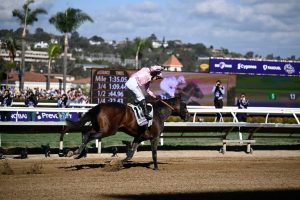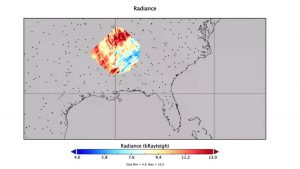Wyshynski: What we learned at the 2022 NHL trade deadline: Player empowerment, GM fights, more
The 2022 NHL trade deadline had a little bit of everything. Stars moving to Stanley Cup contenders. Rebuilding teams growing treasure troves of picks and prospects. A canceled deal between division rivals. Kevin Weekes popping out of my hotel’s ice machine to break a trade. (I might have hallucinated that last one.)
But most importantly, it had lessons to be carried forward through the rest of this season into future trade deadlines, when we’ll undoubtedly still be waiting for the Leafs to upgrade their goaltending.
Here are five lessons from the NHL trade deadline. Live and learn.
Power to the players
The NHL trade deadline is typically an exercise in cruelty.
The endorphin rush of seeing Stanley Cup contenders adding pieces to their puzzles, or players wearing unfamiliar uniforms, has a funny way of obscuring the fact that people’s lives are being uprooted in real time.
Don’t get me wrong: NHL players know what they signed up for, and it’s not as if the teams that acquire them are putting them up in a youth hostel or anything. But these are still phone calls they dread getting and conversations they dread having, especially with loved ones. On top of feeling like a transfer student walking into class for the first time a few weeks before finals when they meet their new teammates.
Unless, of course, you’re one of the lucky ones who gets to dictate trade terms, thanks to the terms of your agreement with your team.
What made the 2022 trade deadline remarkable was that agreement wasn’t always a contract clause, but rather a gentlemen’s one. New York Islanders GM Lou Lamoriello could have traded Zdeno Chara. He didn’t, having given him his word when he signed there.
When Marc-Andre Fleury was traded by the Vegas Golden Knights to the Chicago Blackhawks in July, he didn’t immediately indicate that he’d play for his new team. Part of the arrangement to entice Fleury to Chicago was the team’s solemn vow that it would present him with any trade offers sent its way, and if he didn’t want to play for that team, the Blackhawks wouldn’t make the trade.
It was trade “protection” that went above and beyond the 10-team no-trade list that was actually in his contract, and the Blackhawks honored it. The Minnesota Wild pitched them a trade, and Fleury — having played with GM Bill Guerin and for senior adviser Ray Shero in Pittsburgh — agreed to go.
The Blackhawks could have moved him elsewhere. Heck, they really could have used the bounty they’d have landed in return had it been more of an open market. But a deal is a deal.
Mark Giordano was in the same situation. He had a 10-team no-trade list that our Emily Kaplan reported wasn’t even a consideration for the Seattle Kraken. He agreed to play for Seattle and became the Kraken’s first captain. Scuttlebutt around the NHL was that Giordano was only going to be traded back to the Calgary Flames — unlikely, as expansion rules dictated it had to be at his full cap hit — or to the Toronto Maple Leafs, his hometown team. Kraken GM Ron Francis did him a solid and sent him to Toronto, even though Seattle didn’t get a first-round pick back.
Again, not much of a field for a trade when a guy can make his own market.
Claude Giroux, meanwhile, had a full no-movement clause and hence could choose where he wished to play. How that actually played out is still a bit of a muddle.
Veteran Philadelphia reporter Anthony SanFillipo, on the “Snow The Goalie” podcast, claimed that Giroux asked GM Chuck Fletcher for an assurance that he would re-sign with the Flyers over the summer and return to Philadelphia next season. Fletcher reportedly would not give that to him, so Giroux was less motivated to expand his no-movement clause to include other teams. Essentially, he would accept only a trade to the Florida Panthers, even if other offers on the table were better for the Flyers. (And I was told Colorado had Justin Barron and a first-rounder ready to roll to Philly.)
Giroux’s agent, Pat Brisson, denied that report to me on Monday. “You can put me on the record that there’s no such thing. It was a straight trade based on the fact that Claude is going to be a UFA this summer and wanted to have an opportunity to go win the Cup. We’ll reevaluate everything at the end of the season for next year,” he said via text.
Fletcher also denied it … but his reaction to the trade deadline move didn’t necessarily sync with that vibe. He said he had “a very limited market ultimately that I could deal with him to.” When asked about the other teams involved in the end, he essentially said to ask Giroux that question.
Huh.
Fleury, Giordano and Giroux were three of the biggest names available at the trade deadline, and in all three cases “player empowerment” subverted the transactional frenzy that would have otherwise surrounded them. It’s not the first time this has happened at the deadline, and it’s only going to happen more frequently.
St. Louis Blues GM Doug Armstrong told me he believes that player control over trade destinations has grown substantially in the past five seasons.
“If a player is giving you something in return for the no-trade, I understand doing it. If you think you’re getting a value contract, it’s part and parcel,” he said. “I don’t mind giving out no-trades myself. Maybe I’m wired differently, but at the end of the day if someone comes to you and says ‘we don’t want you anymore,’ I’d probably leave anyway.”
In the end, he told me, legacy is important when it comes to players working with teams at the end of their tenure.
“I would be shocked if you have a long history with the team, and you wanted to be remembered at the end for screwing them and not helping them out,” he said.
Armstrong’s comments were not Giroux-specific.
Shop early
Do you remember Feb. 14? Of course you do. Overpaying for flowers. Rushing to the local pharmacy to buy one of the few remaining Valentine’s Day cards. Oh, and the Flames acquiring Tyler Toffoli from the Montreal Canadiens.
The Flames traded a lottery-protected 2022 first-round pick, a fifth-round pick, Emil Heineman and Tyler Pitlick for Toffoli, whom they have under contract at $4.25 million through 2023-24.
Since acquiring him, the Flames have gone 12-4-2. Toffoli has 15 points in 18 games and had a month to get acclimated before the NHL trade deadline actually arrived.
Outside of the Panthers getting Giroux, there wasn’t a trade made for a forward that comes close to being as impactful as the Flames getting Toffoli. None of them approached the smart investment of having him at that cap hit for that duration, either.
Calgary GM Brad Treliving won the NHL trade deadline by getting ahead of it by a month. That’s a good lesson to carry forward to future deadlines.
Bad decisions will haunt you
Some of the mistakes made at the NHL trade deadline can be summed up nicely by that meme that goes: “Oh no, it’s the consequences of my actions!”
The Edmonton Oilers and Maple Leafs did not sufficiently address their goaltending problems Monday because they did not sufficiently address them last offseason, when there had been countless chances to do so given the market. The Leafs thought that bringing Petr Mrazek to Toronto — an erratic, streaky goalie, in a market that turns a three-game losing streak into a fireable offense — was a good idea. The Oilers decided to run it back with Mike Smith in honor of his 39th birthday. These were bad decisions that couldn’t be remedied at the trade deadline because any upgrade was going to be too expensive or wanted to play for only the Minnesota Wild, apparently; and any goalie who was available below that level might have been a lateral move at best, but potentially a downgrade.
Again, these beds were made a long time ago.
The biggest “consequences of my actions” arrived late Monday night in the Vegas Golden Knights’ canceled trade debacle with the Anaheim Ducks.
In summary: When the Ottawa Senators signed Evgenii Dadonov in October 2020, they handed him a 10-team no-trade clause. The Ducks were on that list. When the Golden Knights traded for him in July 2021, they were under the impression there was no trade protection. So was the NHL. This was despite his no-trade list being filed to the Senators on time.
Thanks to Ottawa’s miscommunication, the Golden Knights didn’t know they were trading Dadonov to a team on his no-trade list. The NHLPA got involved. The NHL canceled the trade on Wednesday. Dadonov is still a Knight. Ryan Kesler‘s contract remains in Anaheim.
There are a lot of lessons to be learned here, ranging from the need for a centralized NHL database on no-trade lists to legitimate questions about the Senators’ competency that were only exacerbated by the Travis Hamonic trade on Monday. (Yikes.)
But here’s the actual lesson: The Golden Knights’ salary-cap nightmare is of their own making, and it came back to haunt them this season.
It’s true that player injuries are unpredictable. The fact that Vegas has Mark Stone and Alec Martinez on long-term injured reserve while also missing Reilly Smith, Robin Lehner, Brayden McNabb and Max Pacioretty is the primary reason their playoff probability is down to 37% according to FiveThirtyEight. To bring back either Stone or Martinez, the Knights need to open up cap space. Their primary plan to do so was to move Dadonov and his $5 million cap hit to Anaheim. Vegas stood to clear $3.375 million in cap space in the trade.
But why did they have Dadonov in the first place? Please recall that the Knights moved Fleury’s cap hit off the books and then traded for an overcompensated winger who was locked in through next season. Ottawa didn’t retain any salary. The Senators just straight up added $5 million to an already bloated cap, and that money looked even worse after they added Jack Eichel‘s cap hit this season.
“Oh no, it’s the consequences of my actions!”
One bad decision led to an incredibly embarrassing situation at the trade deadline that only served to underscore the panic and chaos surrounding the Golden Knights this season.
When Buffalo Sabres fans start making “What if Eichel forced a trade to a team that then blows up its roster?” jokes with only about 80% hyperbole, something’s clearly rotten in Nevada.
General manager fights are fun
Two words: “Barn fight.”
If they mean something to you, then congrats, you’re an Internet Old. For the rest of you: In 2007, Oilers GM Kevin Lowe signed 24-year-old Ducks restricted free-agent forward Dustin Penner to a five-year contract worth $21.25 million that was intended to blow out the Ducks’ salary structure. Anaheim GM Brian Burke called the move “gutless” and “an act of desperation for a general manager who is fighting to keep his job.” You know, among other unprintable things.
Lowe later called Burke a “moron” who “destroyed” the Vancouver Canucks, and appeared to challenge him to a fight in a radio interview. Burke took the offer so seriously that he offered to rent a barn in Lake Placid, New York, so the two could have at it. Burke said it got so serious that NHL commissioner Gary Bettman stepped in and told Burke, “I heard you guys were thinkin’ about having a fight. If you do, I’m going to suspend you both indefinitely.”
It was chronicled in a delightful animated sequence on Sportsnet:
All of this is to say that general manager feuds absolutely rule. It takes a special kind of swaggering self-assuredness to hold down that job, and it’s a job that carries with it a strange “honor among thieves” code that, when violated, can lead to … well, a barn fight.
So it was delightful to see the NHL’s two youngest general managers generate some heat on trade deadline day. Maple Leafs GM Kyle Dubas was engaged in trade talks for Marc-Andre Fleury with Blackhawks GM Kyle Davidson. TSN’s Darren Dreger reported:
“Here’s a deal that didn’t happen. Chicago and Toronto discussed Hagel and Fleury to the Leafs for Mrazek, Matthew Knies and first-round picks. Never reached a stage where Fleury was asked officially to waive. Toronto declined based on the futures involved.”
That this information leaked did not sit well with Dubas.
“I’ve never had that in our time here, where conversations on something that didn’t happen are out a day later. We rely on other teams to keep that confidential, so it’s disappointing,” he said in an interview on ESPN on Monday.
He doubled down in his post-deadline news conference, saying, “I’ve never had that happen before where the specifics like that have been made public.” He also encouraged media members to ask Davidson about it.
When asked, Davidson said he’s aware of Dubas’ comments and will address them with him in private.
You know what’s a private place for such conversations?
Hint: Horses live there.
Just give us a salary cap site
Finally, this was the 17th NHL trade deadline during the salary-cap era, and the 17th time media and fans had to be amateur mathematicians in trying to determine the feasibility of potential trades, and the financial reasons behind the ones that were made. That’s not even getting to the various forms of trade protection.
I expect in the wake of the Dadonov debacle that there will be a big push at the NHL general managers meetings next week to centralize trade protection in a league-controlled database. That’s fine. It’ll prevent absolute embarrassments like the Ottawa/Vegas/Anaheim mess from happening again.
But it’s not good enough. Not when the NHL wants its trade deadline to be a major event for fans, as the unofficial start of the playoff push. Not when NHL teams are constrained by what they can and can’t do under the salary cap, and then have to explain themselves to those fans without the benefit of illustrative numbers.
The NHL should absolutely have its official database of contracts, clauses and cap hits made available to the public.
I understand the sensitivity in having that information out there for some players. But it’s out there already on salary cap sites. Having it come from the NHL would validate the data. Giving fans the same tools they have on CapFriendly would make trades and transactions more engaging, and bring that interest to, say, NHL.com.
Why doesn’t it exist? Because the league doesn’t see the marketing potential of it. I asked Bettman that question in 2015.
“I don’t think it’s a resource we need to provide because I’m not sure fans are as focused on what players make as they are about their performance on the ice,” he said.
I’ve banged on this drum for years. If we’re going to have a salary cap and we’re going to treat trades as a way to generate buzz for the NHL, then fans should have all the information they need from the league to participate in the fun.
That way, when Kevin Weekes jumps out from behind your houseplant to announce that Frank Vatrano was traded to the Rangers, you can find out the cap implications yourself.
Check out the unconventional but hilarious locations in which Kevin Weekes broke NHL trades throughout the week.
Jersey Fouls
I suppose we need a ruling on this:
These new #nhl reversible jerseys are awesome!! Just ordered mine!! pic.twitter.com/zzVL7y8fI7
— Dr. Crentist (@ReverendBobby) March 23, 2022
Solid joke, but reader “cincodemaio” had a legit question: “Where will the inevitable Ducks’ Dadonov sweater rank on the Jersey Fouls?”
Official ruling: Not a Foul!
The NHL did approve the Evgenii Dadonov trade before it had to reject it for that no-trade clause snafu. For a fleeting moment, he was a Duck, even if he never played a game for them and basically refused to step foot in Anaheim. The only controversial thing is whether he would have worn No. 64 with the Ducks. We’ll assume he would have pulled rank on Jacob Perreault to get the number. So go ahead and waste that money on a gag jersey, Anaheim fans — not a Foul.
Video of the week
The Reading Royals faced the Adirondack Thunder in an ECHL series last weekend on green ice in honor of St. Patrick’s Day, something of an annual tradition for the Royals.
First thought: I would probably lick the ice to see if it tasted minty. Second thought: While I would love for an NHL team to try this, I would not love to hear the losing team complaining that the ice “was too green/wasn’t green enough.” Because that would 100 percent happen.
Winners and losers of the week
Winner: Claude Giroux
Obviously, the chance to capture a Stanley Cup with the Florida Panthers alongside fellow “Old Guy Without a Cup” Joe Thornton is a win. But how many players are able to close the book on their tenure with a team before the trade deadline with the kind of party the Flyers threw for Giroux? Sure, it was for his 1,000th NHL game. But it doubled as a bon voyage to their captain, and it was glorious.
Loser: Jonathan Toews
The Brandon Hagel trade broke him. “For the longest time, the thought never entered my mind to leave Chicago. And in this case, you can’t help but picture yourself and what it would be like to play for another team and what that experience would bring. The thought pops in your mind. But Chicago is my home,” he said, via the Sun-Times.
If the Blackhawks retained 50% of his contract, it’s still a $5.25 million cap hit next season for a player with 25 points in 52 games. But as he also said: “Chicago is my home.”
Winner: The Drew House jersey
The top-selling item in the NHL’s online retail shops in the U.S. and Canada right now?
The @MapleLeafs #NextGenGame jersey, designed in collaboration with the Leafs, NHL, adidas, @justinbieber and @drewhouse. It makes its on-ice debut tonight. pic.twitter.com/l06V3T90k4
— Greg Wyshynski (@wyshynski) March 23, 2022
The “reversed” Maple Leafs alternate jersey, which was designed in part by Justin Bieber, is legitimately awesome, especially the way the stitching of the Maple Leafs crest outlines the Drew House logo. Or maybe it’s just because it reminds us of “Watchmen.”
Loser: The black-and-blue jersey
Watching these in action against New Jersey on Wednesday … nah. It needed a bit more balance between the black and the blue that makes the Maple Leafs such a distinct team. It’s got some clever aesthetic touches, like the Toronto skyline on the armband, but there’s something very “everyone gets a black jersey” 1990s fashion wave about this.
Winner: Breakfast
I can not be more excited to announce the launch of March Munch cereal. Cinnamon Toast Crunch has never looked so good! This is a dream come true, growing up I never could have imagined this being a possibility! Available at Shaw’s, Star Market and Market Basket. pic.twitter.com/gqL1EgB1i5
— Brad Marchand (@Bmarch63) March 23, 2022
Finally, a breakfast cereal that’ll make your spoon lick you!
Loser: Phil Kessel fans
Those of us hoping our sweet hockey boy would have a chance to make his magic on a Stanley Cup contender were crushed when Arizona didn’t trade him. The reason? When the Coyotes retained salary on the Johan Larsson trade with the Washington Capitals, they reached their retained salary maximum because they had already kept a chunk of salary from Oliver Ekman-Larsson and Darcy Kuemper.
We’ll just have to wait for Kessel to hit free agency after the season. Summer of Phil. I’ll start the grill.
Puck headlines
-
Fantastic look at what Nicklas Backstrom is, and is not, in 2021-22 for the Washington Capitals. “The harsh reality is that Nicklas Backstrom may never be ‘Nicklas Backstrom’ again — if your $9.2 million center needs a $5.7 million winger or two to be effective, he’s probably not a $9.2 million center.”
-
The Team Marketing Report Fan Cost Index is back. That’s the metric that measures the average cost of four non-premium tickets, two beers, two sodas, four hot dogs, two souvenir hats (as a proxy for merch buying) and parking. For the NHL this season, that’s $462.58.
-
Why the NHL needs to make a “substantial offer” to unite women’s pro hockey.
-
Remember Evander Kane‘s grievance against the San Jose Sharks after they terminated his contract? “Six weeks later, multiple sources have confirmed that there’s still no hearing date set between the NHL/NHLPA. The end of the regular season is a little more than a month away.”
-
Jackie Redmond, Jamie Hersch, Kendall Coyne Schofield and Jennifer Botterill teamed up to host the first all-women edition of “NHL Tonight.”
-
Did the Minnesota Wild trade the wrong goalie?
-
Finally, an awesome video breakdown of what Mark Giordano has done and still does from Jack Han.
From Your Friends At ESPN
NHL trade deadline reports cards for all 32 teams. Some A’s and one F.






